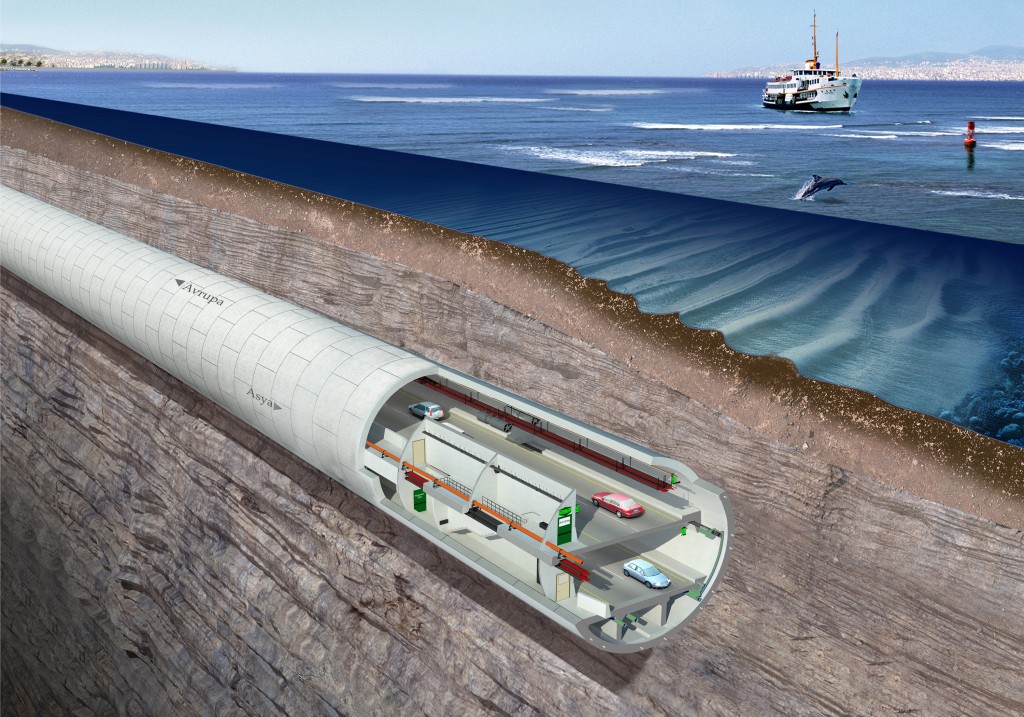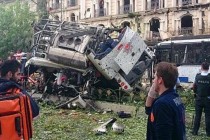A journey across the Bosphorus Strait that used to take over 1.5 hours now takes just 15 minutes. That’s the time needed to drive across Istanbul’s new 5.4 km (3.4 miles) long Eurasia Tunnel, which was formally opened to the public on Thursday 22 Dec.
Entrances to the Eurasia Tunnel are in the Göztepe district, on the Asian side of the city, and the Kazlıçeşme district on the European side.
The single tube tunnel boasts a twin-deck (split levels), each with two lanes, designed to help ease Istanbul’s mega congestion. A little over 3 km of the tunnel runs along the seabed. At its deepest point, it is 106 meters below the surface of the sea, making it the second deepest underwater tunnel after Norway’s Eiksund Tunnel, which reaches a depth of 287 metres below sea level.
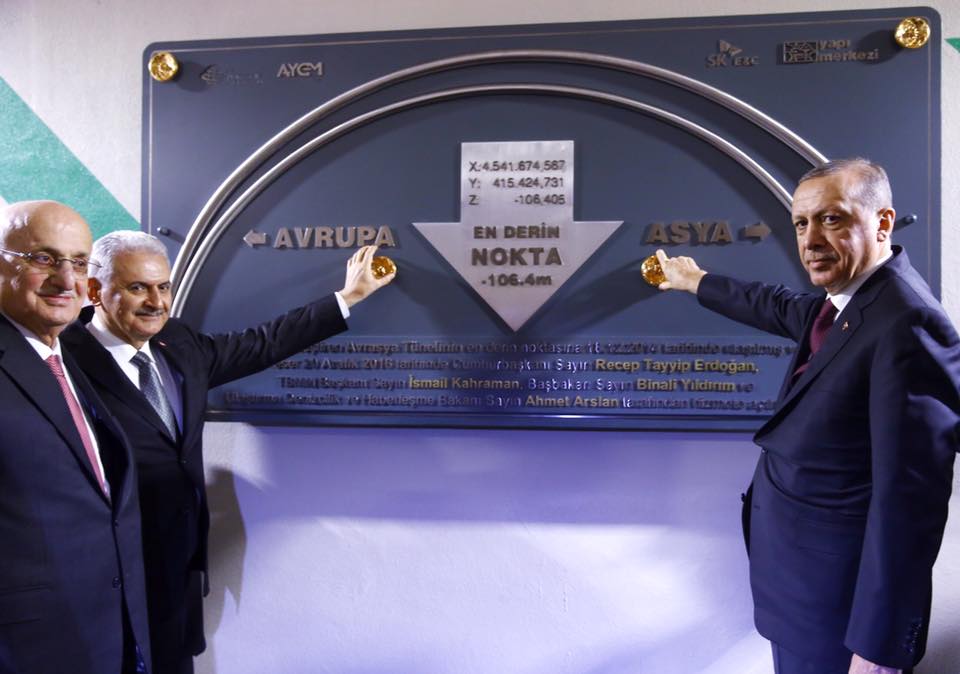
On Tuesday, President Erdoğan and Prime Minister Yıldırım led a delegation to inspect the completed tunnel. The inauguration included a blessing by Prof. Mehmet Görmez, the head of Turkey’s Religious Affairs. Many foreign dignitaries, such as Albanian President Bujar Nishani, Gergian Prime Minister Giorgi Kvirikashvili, and foreign ambassadors, were among the guests to attend the opening ceremony.
‘120,000 vehicles expected to use Eurasia Tunnel daily’
Addressing the guests, PM Yıldırım said: “Today we are opening the [second] deepest tunnel in the world, which is located 106.5 meters under the sea. The tunnel will ease traffic congestion and around 120,000 vehicles will pass through this tunnel daily. With the start of service, the fuel savings will reach TL 160 trillion. It was made to be environmentally responsive, fast, safe, and comfortable.”
The Turkish President pointed to the many awards the pioneering tunnel had already won for its design and construction during the four years it had taken to build. He also said it would significantly improve travel conditions for the city’s 14 million people, regularly hampered by bad weather that prevented ferry crossings:
“The Eurasia Tunnel allows people to transit between the European and Asian sides without the effect of weather conditions.”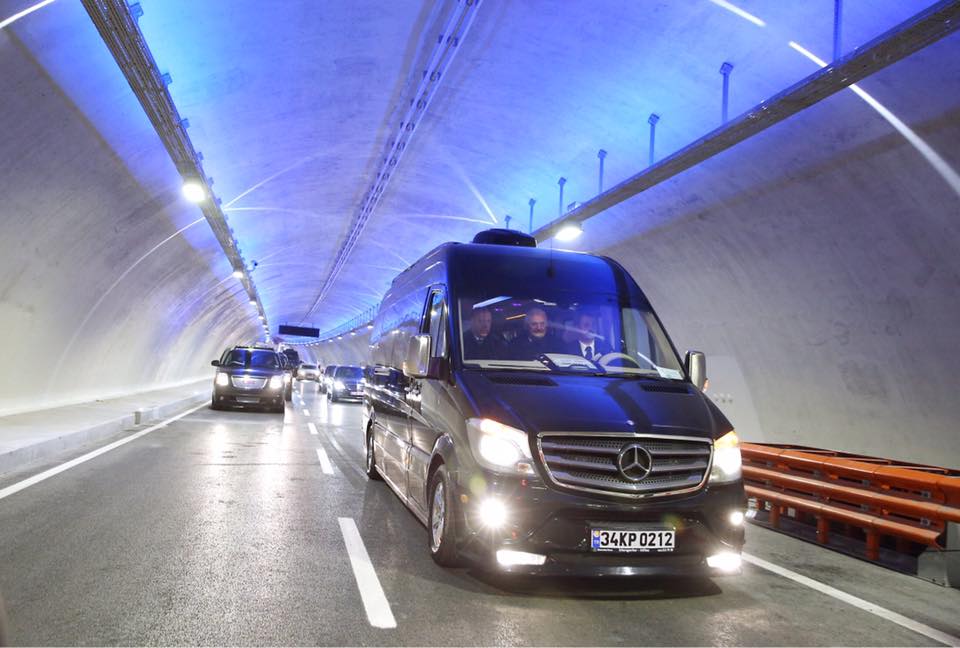
Turkish-South Korean partnership behind the $1.25 bn tunnel
The $1.25 bn tunnel involved a Turkish-South Korean partnership, with private investors for both states winning the right to a build-operate-transfer scheme back in 2009. Their investment was backed by a variety of international financial institutions, including the European Bank for Reconstruction and Development (EBRD), which injected US$150 million into the project.
American, British and Dutch technical specialists were brought on board to help with the tunnel’s design and engineering. A German company provided the tunnel boring machine, with the French tasked to oversee the operation.
Users have to pay a toll to cross. Currently it is 15 TL ($4) for a car, higher for larger vehicles. All funds collected until the New Year will be donated to the families of soldiers and police officers killed by terrorists.
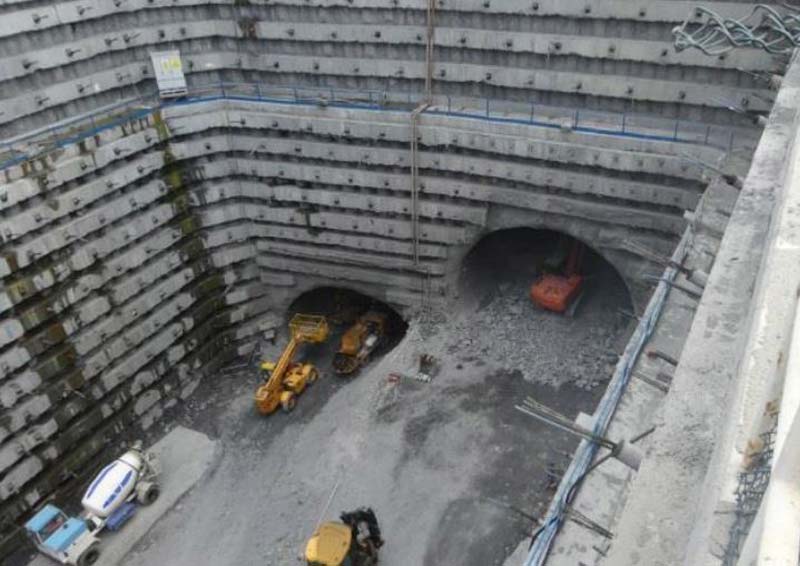
AKP – big on infrastructure
Since coming into office in 2002, the AKP government has invested in multiple major infrastructure projects around the country.
In October 2013, it opened the Marmaray – a railway link and the first-ever underwater tunnel linking the two sides of Istanbul. The Eurasia Tunnel is about 1 km south of the Marmaray.
Earlier this year, the government also inaugurated Istanbul’s third Bosphorus Bridge. The Yavuz Sultan Selim Bridge, running from Garipçe in Sarıyer (Europe), to Poyrazköy in Beykoz (Asia), opened on Aug. 26.
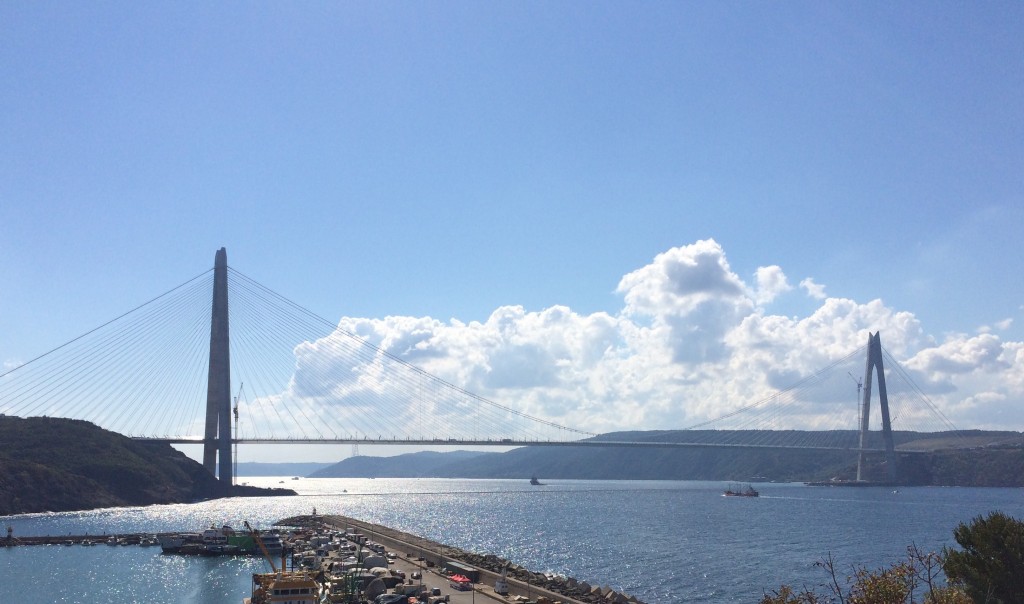
In April 2016, it also unveiled the world’s fourth longest suspension bridge. The Osman Gazi Bridge, located in the Gulf of İzmit, crosses over the eastern edge of the Sea of Marmara.
The AKP’s track record was highlighted by PM Yıldırım in his speech at Tuesday’s opening ceremony:
“We have renewed our 156-year-old railway network. We have doubled the number of airports. The name of the country that is constructing one of the biggest airports in the world today is Turkey.”
The government also intends to create Canal Istanbul, which will link the Black Sea with the Sea of Marmara. Work is expected to start on this mega project in 2018.

